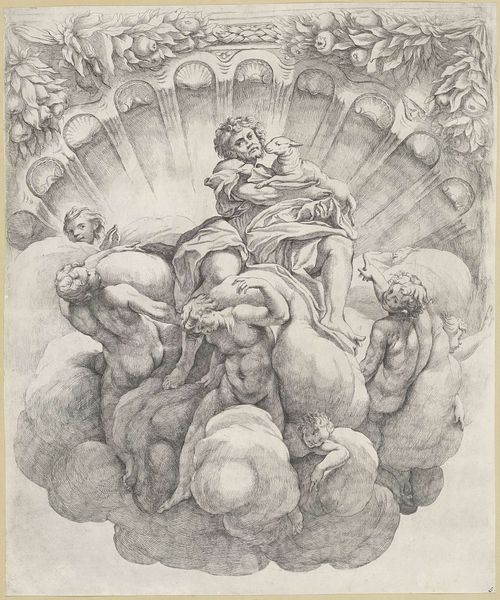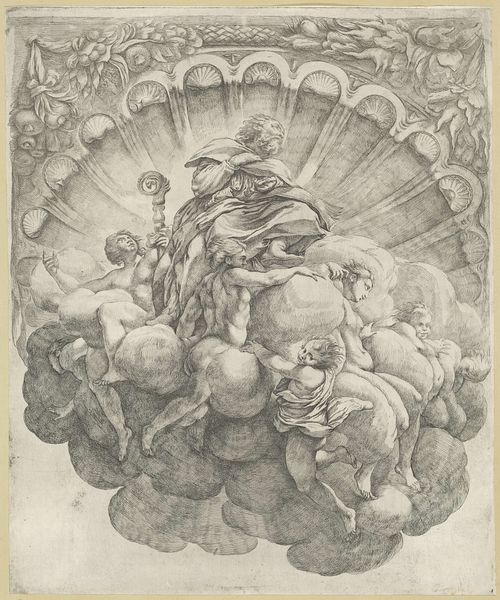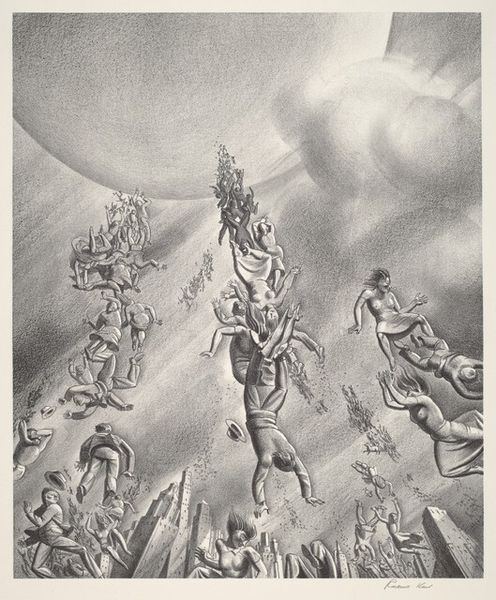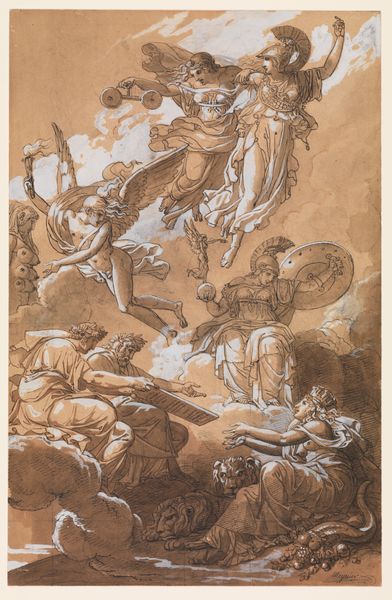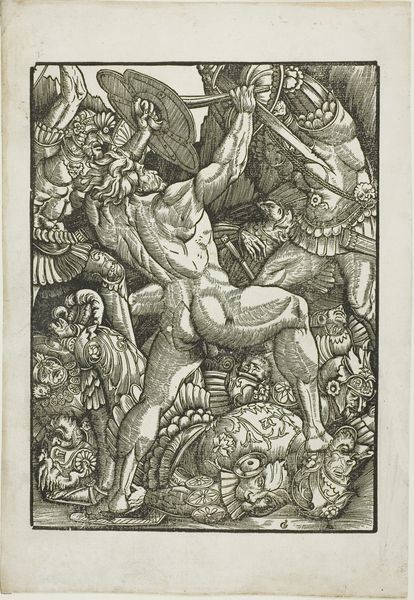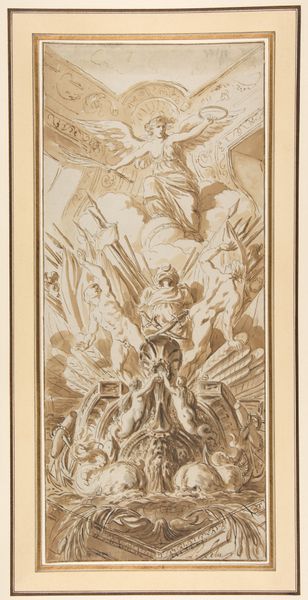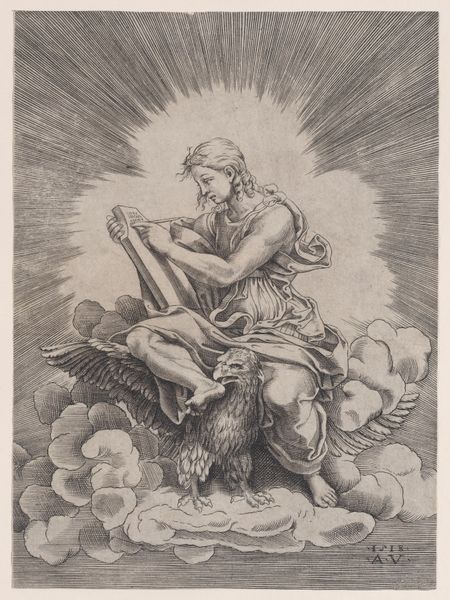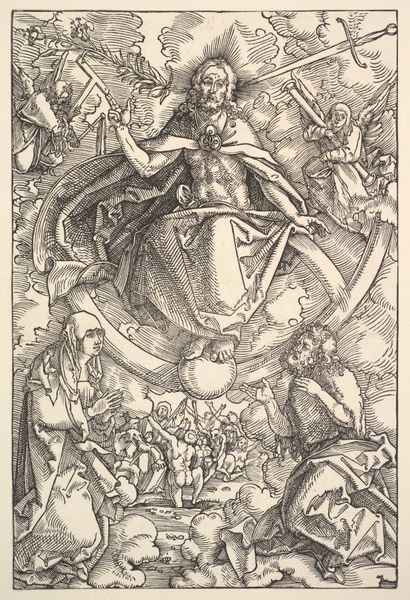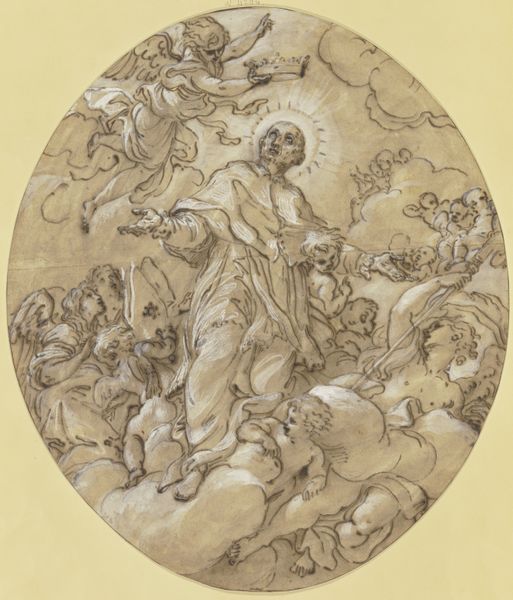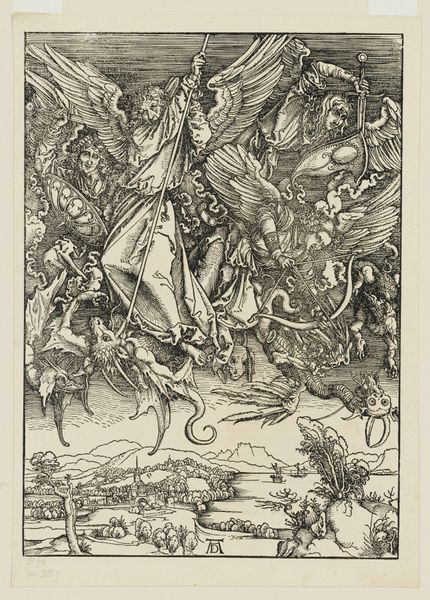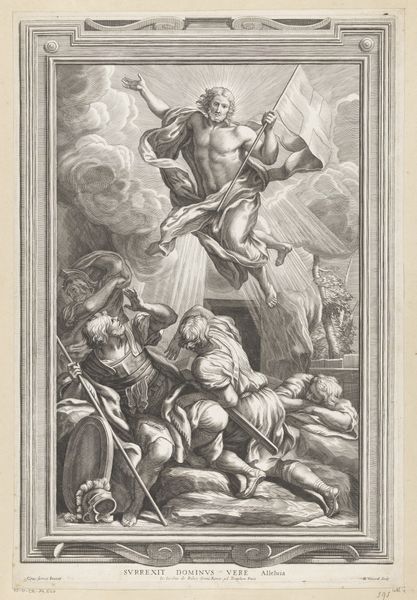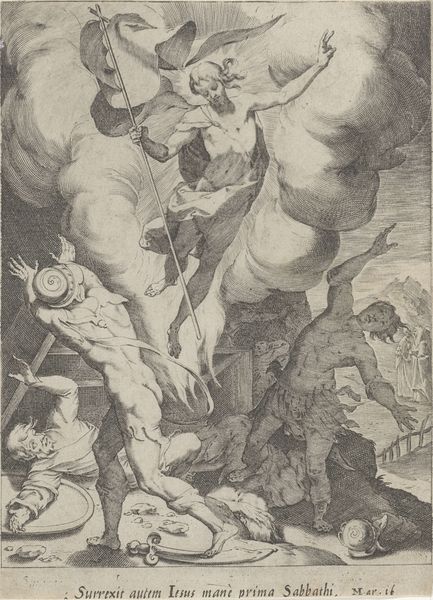
#
pencil drawn
#
toned paper
#
light pencil work
#
pen sketch
#
pencil sketch
#
pencil drawing
#
pen-ink sketch
#
pen work
#
pencil work
#
sketchbook art
Dimensions: height 490 mm, width 410 mm
Copyright: Rijks Museum: Open Domain
Editor: This is "Bisschop omgeven door zes engelen," a pen and pencil drawing by Giovanni Battista Vanni, created sometime between 1609 and 1660. The light pencil work on toned paper gives it a soft, ethereal feel. How do you interpret the scene depicted, considering its historical context? Curator: What strikes me is how this sketch embodies the power dynamics within the Church at the time. The bishop is central, literally elevated and illuminated, while the angels serve as supporting figures. Do you think this idealized representation aligns with the realities of religious authority in 17th-century Europe? Considering the prevalent struggles with poverty and social injustice? Editor: That's a good point. I hadn't really thought about the power dynamics. Perhaps it’s more aspirational, showcasing the Church’s ideal of guidance and divine connection rather than its practical reality? Curator: Maybe. But isn't there also a sense of control implied here? The bishop's hand gestures seem directive, authoritative. Think about how visual imagery has historically been used to reinforce societal hierarchies. How might this image function within that broader context? What statements are the angelic figures expected to make? Editor: So, it's not just a religious scene, but a political statement as well? That is insightful. Seeing it that way definitely shifts my perspective. Curator: Exactly. Art is rarely created in a vacuum. Analyzing these power structures helps us unpack the messages embedded within. It encourages us to consider the purpose, intentionality, and historical framework that framed its inception.
Comments
No comments
Be the first to comment and join the conversation on the ultimate creative platform.
